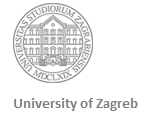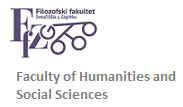Syllabus
Course title: Post-editing and machine translation quality assessment
Course coordinator: Professor Nataša Pavlović
Instructor: Professor Nataša Pavlović
ECTS credits: 4
Language: English and Croatian
Semester: summer (2nd or 4th)
Status: Elective
Form of instruction: 2 contact hours of seminar + e-learning
Examination: written, continuous assessment
OBJECTIVES:
By the end of the course the students should be able to post-edit machine translation output and assess its quality.
COURSE DESCRIPTION:
The course deals with the following topics: the concept of translation quality; error classifications; post-editing vs. human translation revision; types of errors in MT output; levels of post-editing relative to translation purpose; post-editing guidelines; monolingual and bilingual post-editing; human and automatic MT quality assessment; pre-editing; integration of MT in CAT tools; MT and terminology; role of post-editing in professional translation practice; qualifications and competences required of post-editors; the impact of MT on translation theory and practice.
MODE OF INSTRUCTION:
The coursework consists in practical tasks related to post-editing and MT quality assessment, as well as discussion of particular topics (see Week-to-week schedule). The course involves e-learning via http://omega.ffzg.hr/.
COURSE REQUIREMENTS AND ASSESSMENT:
Regular attendance, preparedness for class, active participation in class and in e-learning, regular submission of assignments.
The final grade is based on continuous assessment of particular course elements (attendance, active participation in class and in e-learning, end-of-term paper).
LEARNING OUTCOMES:
After completing the course the students will be able to post-edit MT output of different types of texts in various fields in line with the guidelines and instructions; pre-edit the text for MT; assess the quality of MT output; critically assess the translation process in which MT has been used as an integral part; cooperate with other translators, terminologists and field experts; critically assess the impact of MT on translation theory and practice.
OBLIGATORY READING:
O’Brien, S. 2017. “Machine Translation and Cognition”. In: Schwieter, J.W. i Ferreira (ed.), A. Translation and Cognition. Hoboken: Wiley Blackwell
O’Brien, S. & Simard, M. (eds.) 2014. Machine Tranaslation Special Issue: Post-E
O’Brien, S. et al. (ed.) 2014. Post-Editing of Machine Translation: Processes and Applications. Newcastle: Cambridge Scholars Publishing.
O’Brien, S., Simard, M. & Specia, L. 2013. Proceedings of MT Summit XIV Workshop on Post-Editing Technology and Practice. URL: http://www.mt-archive.info/10/MTS-2013-W2-TOC.htm
Rico, C. and Torrejón, E. 2012. “Skills and Profile or the New Role of the Translator as MT Post-Editor”. Revista Tradumática: technologies de la traducció 10:166–178.
TAUS i CNGL. 2010. “Machine Translation Post-editing Guidelines”. URL: https://taus.net/academy/best-practices/postedit-best-practices/machine-translation-post-editing-guidelines
ADDITIONAL READING:
Guerberof, A. 2009. “Productivity and Quality in the Post-editing of Outputs from Translation Memories and Machine Translation”. Localisation Focus 7(1):11-21.
ISO 18587:2017 “Translation services — Post-editing of Machine Translation Output – Requirements”.
Pym, A. 2013. “Translation Skill-Sets in a Machine-Translation Age”. Meta 58(3):487–503.
Temizöz, Ö. 2014. Postediting Machine Translation Output And Its Revision: Subject-Matter Expert Experts Versus Professional Translators. PhD thesis. Tarragona: Universitat Rovira i Virgili. URL: http://www.tdx.cat/bitstream/handle/10803/128204/TemizozOzlem_TDX2.pdf?sequence=1
WEEK-BY-WEEK SCHEDULE:
The course consists of 15 sessions (30 contact hours) over the course of one semester.
Session 1: introduction; presentation of the syllabus and course requirements; a brief overview of MT development and post-editing; discussion.
Session 2: the concept of quality in translation from various perspectives; error classifications; discussion and tasks.
Session 3: comparison of MT output produced by different systems; differences in quality and error types; differences related to text types and fields; student expectations and attitudes towards MT; discussion and tasks.
Sessions 4 and 5: comparison of machine and human translations; expected error types in each; differences related to text types and fields; discussion and tasks.
Session 6: post-editing guidelines; levels of post-editing; discussion and tasks.
Sessions 7 and 8: monolingual and bilingual post-editing; discussion and tasks.
Sessions 9 and 10: pre-editing and its impact on MT output; discussion and tasks.
Session 11 and 12: human and automatic MT quality assessment; discussion and tasks.
Session 13 and 14: post-editing in CAT tools; terminology management in translation processes involving MT; discussion and tasks.
Session 15: the role of post-editing in professional translation practice; competences and qualifications required of post-editors; student feedback on the course.



